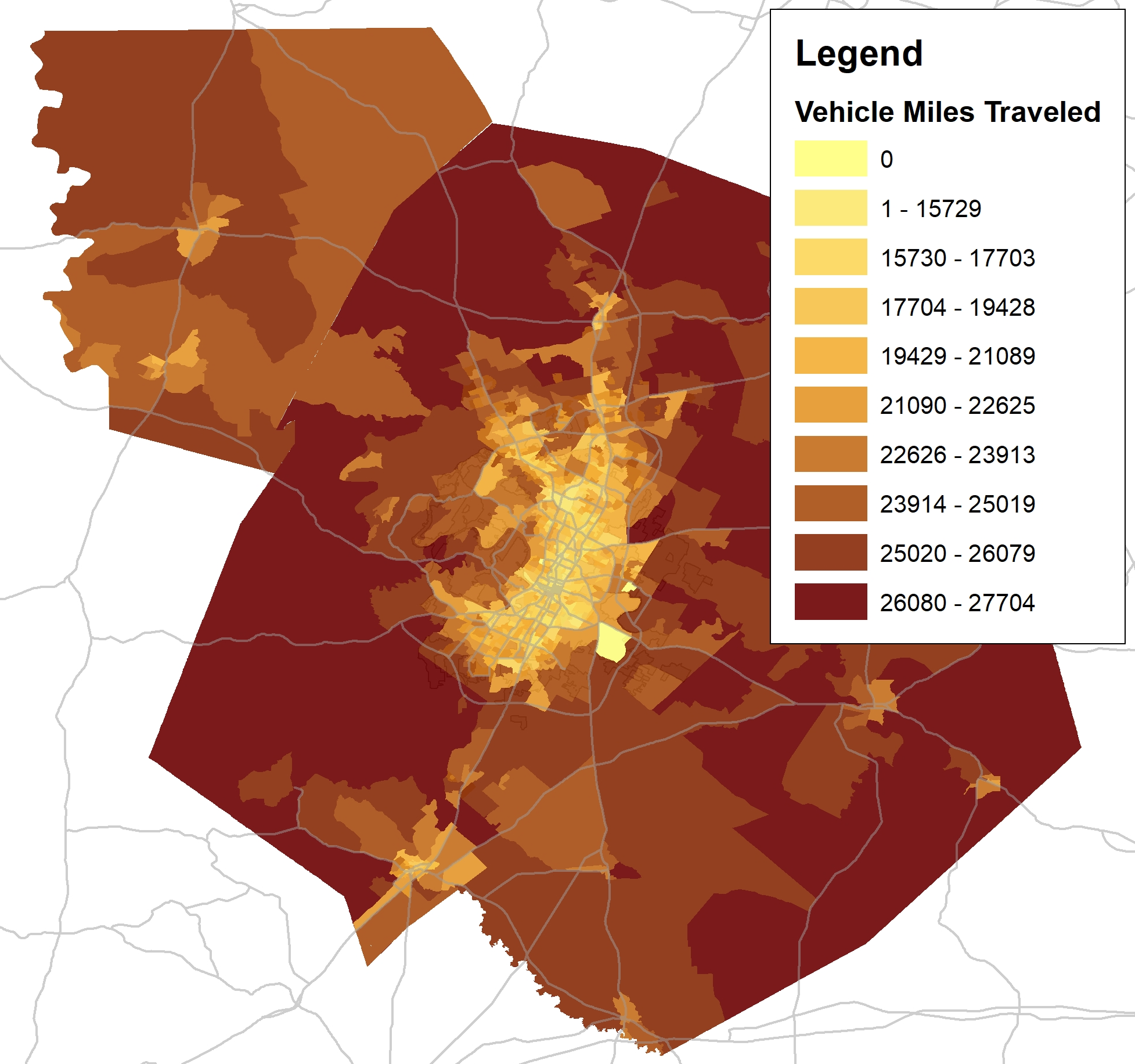Vehicle Miles Traveled, VMT, is a crucial measure of how much we travel, individual, by neighborhood, or across a metropolitan region, or nation. Household VMT is a huge input in our personal carbon footprint and transportation costs. Total VMT in a region is directly related to the rate of traffic fatalities. Traditionally, VMT has been regarded as an unavoidable consequence of regional growth, with many elected officials actively working to sustain VMT growth believing that economy growth is coupled with VMT.
Texas transportation planners continue to allocate billions of dollars based on the notion that VMT increases uncontrollably. However, this may be a faulty assumption. Nationwide, per capita VMT has a slight negative correlation with growth. TxDOT’s own datasuggests decoupling between growth and VMT. Harris, Dallas, and Tarrant counties, the three largest in the state, added 1,201,811 people between 2006 and 2015, but drove 6,985,040 fewer miles on TXDOT roads.
Ten people die every day on Texas roads. Vehicular fatalities could be reduced significantly with deliberate policy aims to reduce VMT. Crashes cost Texas $162 billion, and congestion drains a further $14 billion in unproductive time spent in cars. With an annual state VMT of 258 billion, every mile driven essentially is responsible for $0.63 of pain, suffering, and property losses in crashes. These effects are not given appropriate consideration in transportation decisions both in our private decisions, where these costs are hidden from us as we choose to drive on “free” roads, and in our public decisions, where elected officials have scant data on the true costs of our transportation system. Given the predictable and controllable negative consequences VMT, planners must explicitly aim to reduceVMT.
Transportation is responsible for over one third of carbon emissions in the United States. These emissions are a simple function of fuel efficiency and VMT. Fuel efficiency has been regulated with great success by the federal government in recent decades, by measures such as increasing mileage standards for vehicles and the gas tax. These efforts provide a foundation for deliberate VMT reduction through transportation policy.
On an individual level, VMT reduction is the most significant way to reduce personal carbon emissions. VMT can be reduced on a personal level by taking advantage of public transportation, but more importantly considering location-efficiency when choosing housing, work, and school locations can significantly decrease your carbon footprint – while providing you with greater safe access to all that our growing metropolis can provide.
But the extent to which low carbon lifestyle options are available to individuals relies on the existing urban environment. As the Austin region grows from two to four million people, the decisions made in CodeNEXT and the 2045 Regional Transportation Plan will determine how many people are allowed affordable access to low carbon, healthy, walkable urban neighborhoods.
The Center for Neighborhood Technology maintains a Housing and Transportation Affordability Index, which provides detailed data on the financial and environmental costs of housing and transportation across the US, which provides the data basis for our analysis on VMT and transportation related carbon emissions.
The map above shows Vehicle Miles Traveled per household across the Austin region. This measure is lowest in the urban core, increasing as access to alternative modes of transportation declines and trips required to reach destinations grow longer. Data from CNT H+T Affordability Index, analysis and image generation done in-house.
Join us this Friday, February 16, for the 3rd in the Growing Weirder Breakfast Series with a panel discussion focused on environmental sustainability.

